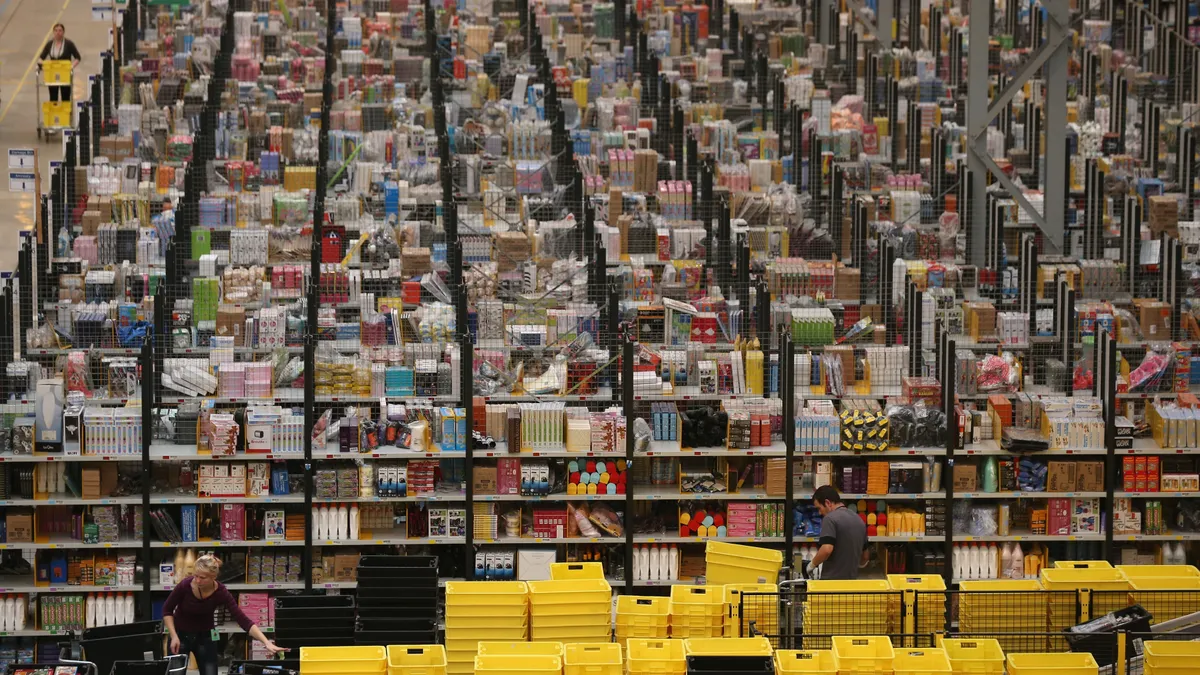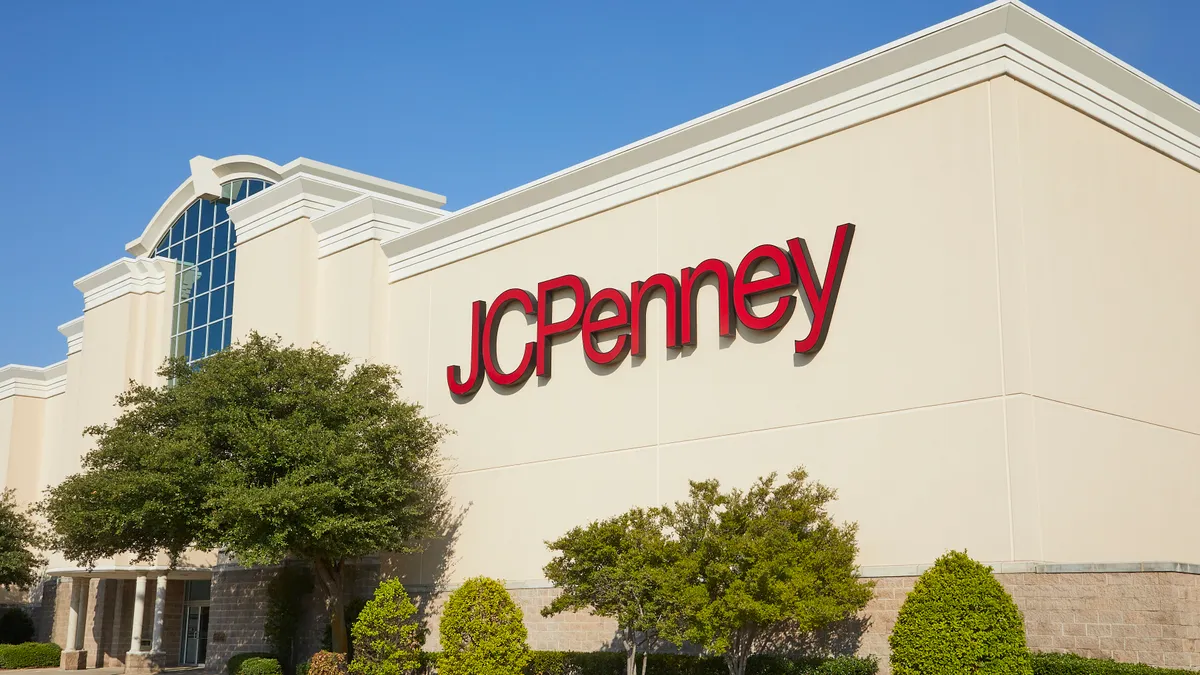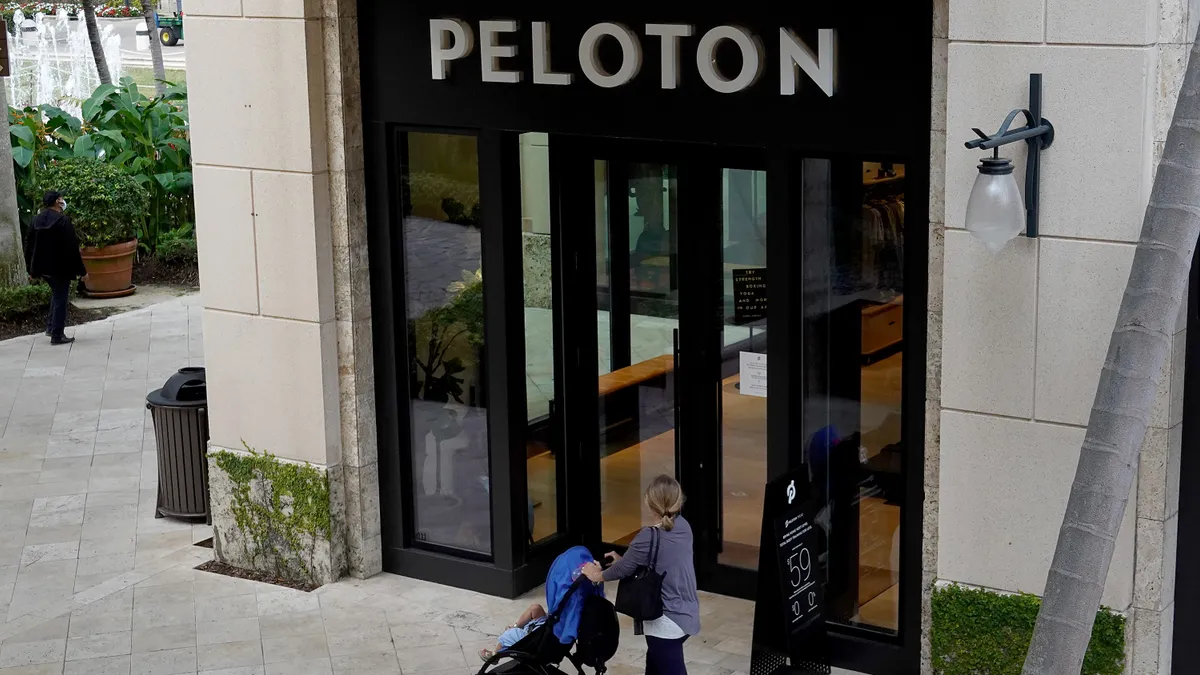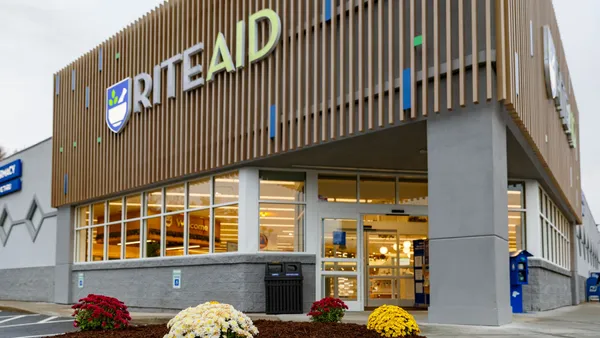Amazon spent the past two years absorbing real estate space across the United States. It built new fulfillment centers to meet ballooning demand. Now, its breakneck pace may soon be slowing as it turns its attention to other nodes of its supply chain — including heavier investments in transportation.
A massive real estate footprint is a critical aspect of Amazon's strategy. Operating its own fulfillment centers, sortation centers and delivery stations provides greater control over the supply chain, allowing the company to deliver on the shipping speeds it promises Prime members.
"Shipping speed is the growth driver in e-commerce," said Shipium co-founder and CEO Jason Murray, former vice president of supply chain and retail services at Amazon. "Prime submitted that as the number one fact. You can do whatever you want with marketing, checkout, one-click (ordering), whatever it is — speed is what drives everything."
Amazon's real estate footprint is a case in point. The e-commerce giant nearly doubled its operations capacity in the past two years to keep up with demand, CFO Brian Olsavsky said on an earnings call in February. Fulfillment center growth has been a large part of this equation — Amazon grew its number of U.S. fulfillment centers by 30% in 2021, according to data from supply chain consulting firm MWPVL International as of Feb. 16.
But investments alone have not been enough for Amazon to reach its desired shipping speeds. One-day delivery levels for Prime services are not yet back to where they were pre-pandemic. So now, Amazon is looking closer at other operational investments to boost its shipping capabilities.
"We see [fulfillment center spend] moderating," Olsavsky said, adding future growth will probably match other sides of the business.
Experts say the development was likely after the initial e-commerce boom fueled by the COVID-19 pandemic cooled off.
How Amazon's strong fulfillment footprint meets demand
A flood of online orders caused retailers to adjust – or accelerate – their logistics plans. Foot traffic at brick and mortar stores declined as the pandemic took hold and many consumers opted to shop more often online. In June, Olsavsky said Amazon had been playing catchup to match supply with demand – fulfillment costs as a percentage of net sales climbed from 15.2% in 2020 to 16% in 2021, according to Amazon's 10-K.
Adding more facilities in more markets allows Amazon to grow its capacity while positioning inventory closer to customers for faster and less-expensive delivery. Other companies in the e-commerce space are doing the same.
"The e-commerce share of leasing has really steadied since last year, but it's still higher than pre-pandemic levels," said Heather Belfor, director and head of U.S. research at Prologis, which has Amazon as its top customer. "Amazon is still obviously a major player within the e-commerce space, but it's very diverse because users need more logistics space across the supply chain."
Walmart, for example, is opening its own fulfillment centers and investing in an automated supply chain as it pursues more subscriptions for Prime competitor Walmart+. And Target has four more distribution facilities in development "with plans for several more to follow," Executive Vice President and COO John Mulligan said on the company's Q4 earnings call. The retail titans also have the ability to use their brick and mortar locations scattered throughout the U.S. for omnichannel fulfillment, a critical development as companies try to limit their delivery costs for online orders.
Amazon's distribution footprint far ahead of retail giants
Meanwhile, Amazon's slowdown in its fulfillment center buildout appears to already be occurring. Per MWPVL data, the fulfillment center growth rate is currently set to be 22% in 2022. Marc Wulfraat, president and founder of the firm, noted that figure is affected by many existing projects being pushed into this year due to lengthy supply lead times.
Still, among e-commerce platforms, Amazon is unmatched, said Jean-Paul Rodrigue, a professor of Global Studies and Geography at Hofstra University who researches freight distribution. Its domestic distribution infrastructure also towered over Walmart and Target's combined footprint by roughly 173 million square feet, per MWPVL.
"You have that (omnichannel) competition, but it's essentially Walmart offering simply an expansion of its services — that's not the same thing," Rodrigue said.
Amazon gears up to invest in transport
Although Amazon is easing its fulfillment center growth as competitors try to bolster their own distribution capabilities, other areas of its operations are still receiving plenty of attention. Olsavsky hinted at "additional levels of investment" in transportation capacity coming in 2022.
With more people and vehicles moving goods, Amazon can deliver to rural areas of the U.S. without calling on the services of UPS and the Postal Service, Wulfraat said.
"We think that's what their goal is, that they want total control over their destiny when it comes to delivery," Wulfraat said. "We think that ultimately they do want to eliminate UPS and USPS as partners. There's certainly a lot of clues that lead us to believe that."
Greater transportation control would help shield Amazon against rising costs. Amazon reported higher third-party carrier costs in Q4 — an incentive to invest in owned capacity.
Observers say Amazon could have additional long-term pursuits. The company could build more delivery stations, in which customer orders are prepared for last-mile services. It could explore investments to insulate itself further from global supply chain disruptions. Or, it could find ways to penetrate further into a difficult grocery market.
"Everyone buys food, everyone buys a lot of it," Murray said. "They're going to have to find a way to continue to be relevant in that space. I think Whole Foods has been okay, but it hasn't moved the needle."
One thing company observers agreed on is that Amazon isn't satiated with its current fulfillment network, and "moderating" is a relative term for a company that has invested in and grown its fulfillment network at an unmatched rate to set itself apart from competitors. Olsavsky even noted on the Q4 earnings call that fulfillment center spending could tick up once again in the future.
"I think they're slowing down or decelerating," Wulfraat said. But they haven't stopped. "That's certainly not the case."























